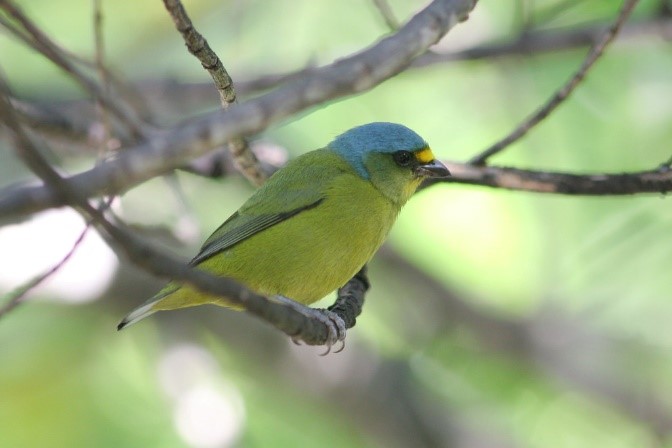Birdfinding.info ⇒ Uncommon and sporadic across much of its range. It seems to be most numerous on St. Lucia, where it can be found consistently in the southern interior in the Edmund and Quilesse Forest Reserves and along the Des Cartiers Rainforest Trail. On Guadeloupe it is found mainly on the western slopes of Basse-Terre, especially along the Soufrière Trail. On Dominica it is most often seen in the Syndicate area. On Martinique, the most reliable sites are in the northern highlands around Fonds-St.-Denis and Jardin de Balata.
Lesser Antillean Euphonia
Euphonia flavifrons
Endemic to the Lesser Antilles. Resident on Guadeloupe, Dominica, Martinique, St. Lucia, and St. Vincent. Occurs mainly in humid foothill and mountain forests; sometimes in other wooded habitats.
Presumed to be resident on Antigua and Grenada as well, but its presence on those islands may be episodic. As further evidence that it is prone to wandering, it has been recorded as a vagrant on several of the smaller adjacent islands: Barbuda, Montserrat, St. Bartélemy, St. Kitts, and some of the Grenadines.
Identification
Unmistakable: the only euphonia in its range. Both sexes are greenish or yellowish-green overall with a powder-blue crown and yellow forehead patch. Males have dusky cheek patches and brighter yellow on the throat than females.
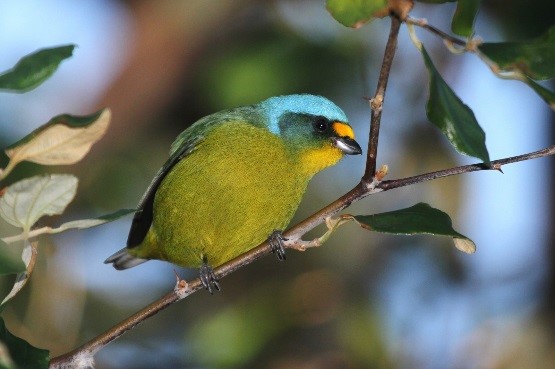
Lesser Antillean Euphonia, male showing yellowish underparts. (Bouillante, Guadeloupe; 2006) © Anthony Levesque

Lesser Antillean Euphonia, female showing green underparts. (Soufrière, Guadeloupe; February 13, 2019) © Anthony Levesque
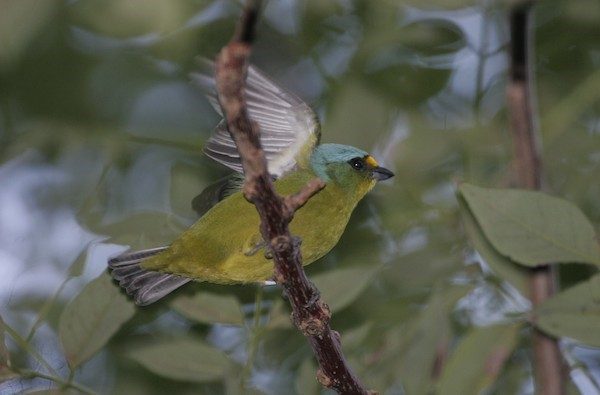
Lesser Antillean Euphonia, female. (Pointe Noire, Guadeloupe; December 29, 2010.) © Anthony Levesque
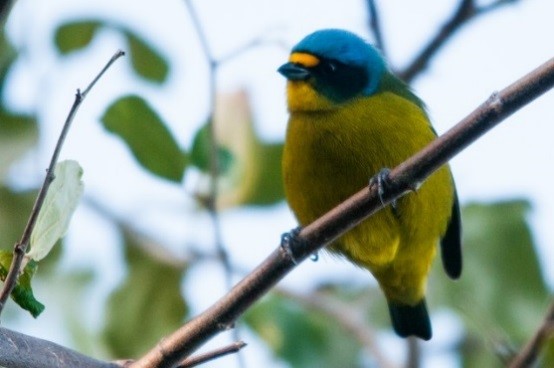
Lesser Antillean Euphonia, male. (Point de vue Tillet, Guadeloupe; December 28, 2012) © Frantz Delcroix
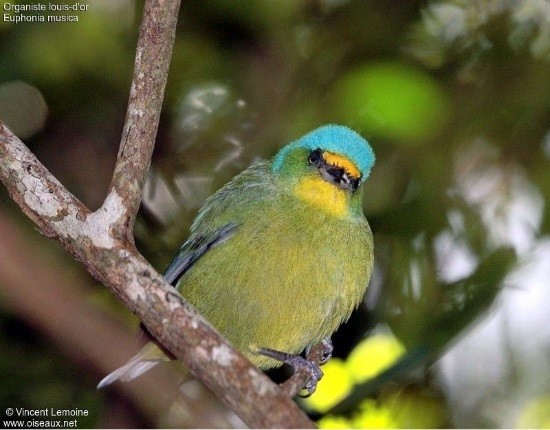
Lesser Antillean Euphonia, male. (Bouillante, Guadeloupe; 2006.) © Vincent Lemoine

Lesser Antillean Euphonia, female showing green underparts. (Des Cartiers Rainforest Trail, St. Lucia; October 29, 2018.) © Roger L. Horn
Voice. Song is a complex chatter: Macauley Library audio recording from Wallings Forest and Reservoir, Antigua; March 14, 2004. © Linda Macauley
Common call is a downslurred whistle:
Notes
Monotypic species. Traditionally considered conspecific with Hispaniolan and Puerto Rican Euphonias, collectively the Antillean Euphonia, E. musica.
Frontiers of Taxonomy: Three Species of Antillean Euphonias. Hispaniolan, Puerto Rican, and Lesser Antillean Euphonias (E. musica, sclateri, and flavifrons) have long been classified as a single species, the Antillean Euphonia (E. musica) but the three forms differ significantly in plumage, morphology (e.g., tail length), and vocalizations. The differences are so conspicuous that it seems inexplicable that they were ever considered conspecific. The failure to designate these forms as separate species appears to be a long-standing oversight of Caribbean ornithology that is certain to be corrected.
References
del Hoyo, J., and N. Collar. 2017. Lesser Antillean Euphonia (Euphonia flavifrons). In Handbook of the Birds of the World Alive (J. del Hoyo, A. Elliott, J. Sargatal, D.A. Christie, and E. de Juana, eds.). Lynx Edicions, Barcelona. http://www.hbw.com/node/1344123. (Accessed November 17, 2019.)
eBird. 2019. eBird: An online database of bird distribution and abundance. Cornell Lab of Ornithology, Ithaca, N.Y. http://www.ebird.org. (Accessed November 17, 2019.)
Isler, M.L., and P.R. Isler. 1987. The Tanagers: Natural History, Distribution, and Identification. Smithsonian Institution Press, Washington, D.C.
Raffaele, H., J. Wiley, O. Garrido, A. Keith, and J. Raffaele. 1998. A Guide to the Birds of the West Indies. Princeton University Press, Princeton, N.J.
